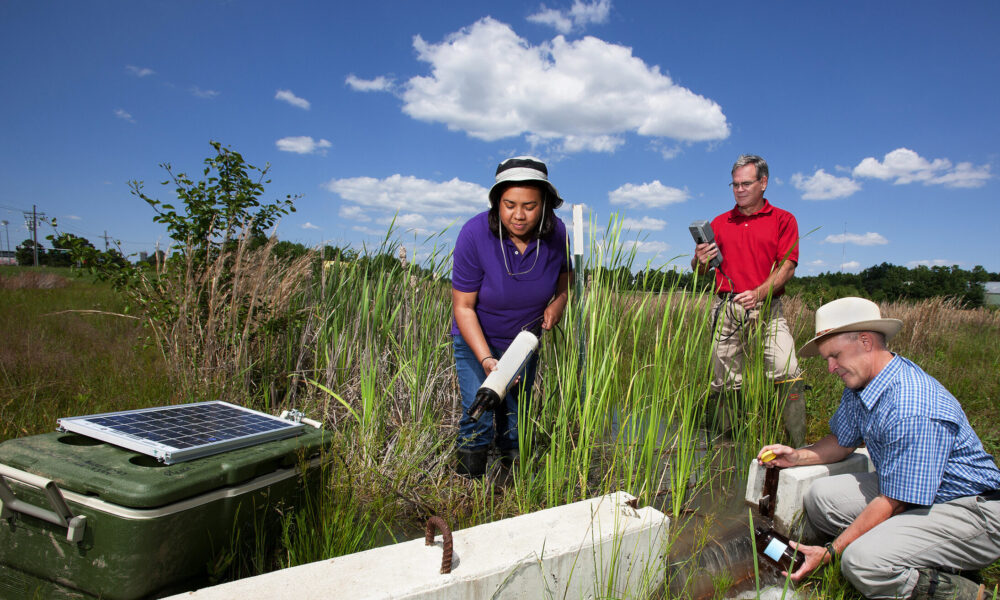The Agriculture Resilience Act (ARA) of 2023 was re-introduced in Congress today. The ARA is comprehensive, science-based legislation that covers many topics related to environmental and climate concerns in agriculture, including conservation on both agricultural and pasture land, renewable energy, and food loss and waste. The ARA is bold legislation that equips farmers with funding for climate resilience, including a much-needed focus on soil health.
But what gets me excited about the ARA is a small but powerful section about research that includes truly transformative changes to the vision of the US Department of Agriculture Research, Education, and Economics (USDA REE) mission area and to priority areas in its Agriculture and Food Research Initiative (AFRI). The ARA clearly delineates the need to focus on climate adaptation and mitigation strategies as well as sustainable nutrition science, an interdisciplinary approach at the intersection of food production, environment and climate, and human health. This is exactly in line with the Union of Concerned Scientists’ priorities for federal research dollars and we could not be more thrilled.
The REE controls research funding that is both intramural (within the agency) as well as extramural (outside the agency, so research performed at colleges and universities, for instance). The total funding for its mission was approximately $3.7 billion in 2022, with about $445 million distributed through the competitive AFRI program. Refocusing agricultural research to include sustainable nutrition science and climate would lead to more resilient and equitable food systems.
So let me show you why this is important, what exactly the ARA proposes for agricultural research, and what could be the implications of these changes.
“More is better” is an unsustainable paradigm
Historically (and still!), one of the main beliefs in the US economy was that producing more is always better (social scientists call this belief the Dominant Social Paradigm). In other words, to progress as a society, we need to continue growing our production—to produce more of, well, everything. In agriculture, that meant increasing yields of commodity crops, and over the last 100 years this led to consolidation across the US food system. A few corporations benefit and now control our food production to the detriment of small and medium-sized farmers, especially Black farmers who lost the majority of their land and wealth as farms consolidated. The environment suffers as soil is exhausted and water is polluted. On top of these trends, the impacts of climate change are accelerating. Farmworkers are facing dangers, and our communities are experiencing food insecurity despite the abundance of cheap calories. We now know that more is not always better—instead, sustainable, resilient, healthy, and nutritious is better. And our agricultural research dollars can help get us back on track.
The National Agricultural Research, Extension, and Teaching Policy Act sets the REE’s vision, which focuses on productivity and competitiveness, including developing new uses for agricultural commodities. In practice, this type of thinking treats food production in isolation, rather than in an interconnected system of social and environmental realities, including connections with human health, climate change, and other issues. While the USDA REE vision mentions natural resources once, I can assure you that there is no mention of the environment or climate, or equity in farming and nutrition.
New paradigm? Thinking across systems
What the REE vision does NOT currently do is address issues we are facing in the 21st century, like the climate crisis, the degradation of natural resources, or the nutrition security crisis. Instead of producing more, we need to produce better—for the health and well-being of our bodies, communities, and environment. The ARA adds a new purpose to the vision of US agricultural research: to “develop food systems that are healthful, sustainable, equitable, and resilient to extreme weather and other impacts of climate change and other potential intersecting global and national disruptions.”
This new purpose acknowledges that science should not happen in silos, that there is a need for inter- and transdisciplinary coordination to accomplish these outcomes. This is sustainable nutrition science in action, as it connects food production to the environment, climate, and nutrition security, with a greater focus on equity.
And it’s about time. Our analysis found that sustainable nutrition science is severely underfunded by the federal government—which makes sense since it is missing from the REE’s mission and vision. Between 2016 and 2020, only 25 cents of every $1,000 going to government research have been used for sustainable nutrition science projects, and although the USDA recently supported more projects in this area, additional funding is needed. Establishing sustainable nutrition science as a priority will hopefully do just that.
A greater focus on climate in external research grants
Given that human-caused climate change is one of the greatest threats—if not the greatest threat—to people and our environment, I am particularly excited for the ARA’s climate-focused funding. Not only is climate front and center in the REE vision proposed by the bill, but external research funding through the AFRI program will also benefit from a climate-related expansion.
AFRI directs where federal research dollars ($445 million of them in 2022) will go. Currently, it only prioritizes the impacts of climate change (such as floods, droughts, and extreme weather) on agriculture. But our industrial agricultural system also contributes to climate change (11 percent of emissions, which is a lot—and that only includes soil management and animal agriculture, not transportation, energy, and processing). So there is a lot of space for climate mitigation as well. But to be truly sustainable, we have to think holistically, considering if what we grow, and how, is socially, environmentally, and nutritionally sustainable—the jurisdiction of sustainable nutrition science.
The ARA does just that: it includes agricultural climate adaptation and mitigation, while linking climate change to human health and focusing on strategies for small and medium-sized farmers. Though the new addition to AFRI does not reference equity directly, I hope the grant-making process prioritizes projects that focus on health equity, since BIPOC (Black, Indigenous, and other people of color) communities are disproportionately affected by climate change and nutrition insecurity due to centuries of racism and disinvestment. BIPOC farmers have also faced discrimination by the USDA.
This is a good start—what’s next?
Despite my excitement, I have to remind myself that the 2023 ARA is still just a bill. So, although there is a real commitment to advance this legislation, negotiations to include it in the food and farm bill of 2023 are only about to begin. What’s more, while we now have a road map for transforming agricultural research, we need to make sure the federal government turns this research into action—and uses science to transform our food system.
I encourage you to ask your congressperson to cosponsor the Agriculture Resilience Act, which will increase the likelihood of its being included in the larger food and farm bill of 2023. You can also join us in asking for a food and farm bill that will be transformational, setting new priorities for US agriculture by supporting sustainable nutrition science and taking a holistic approach to the climate crisis.

